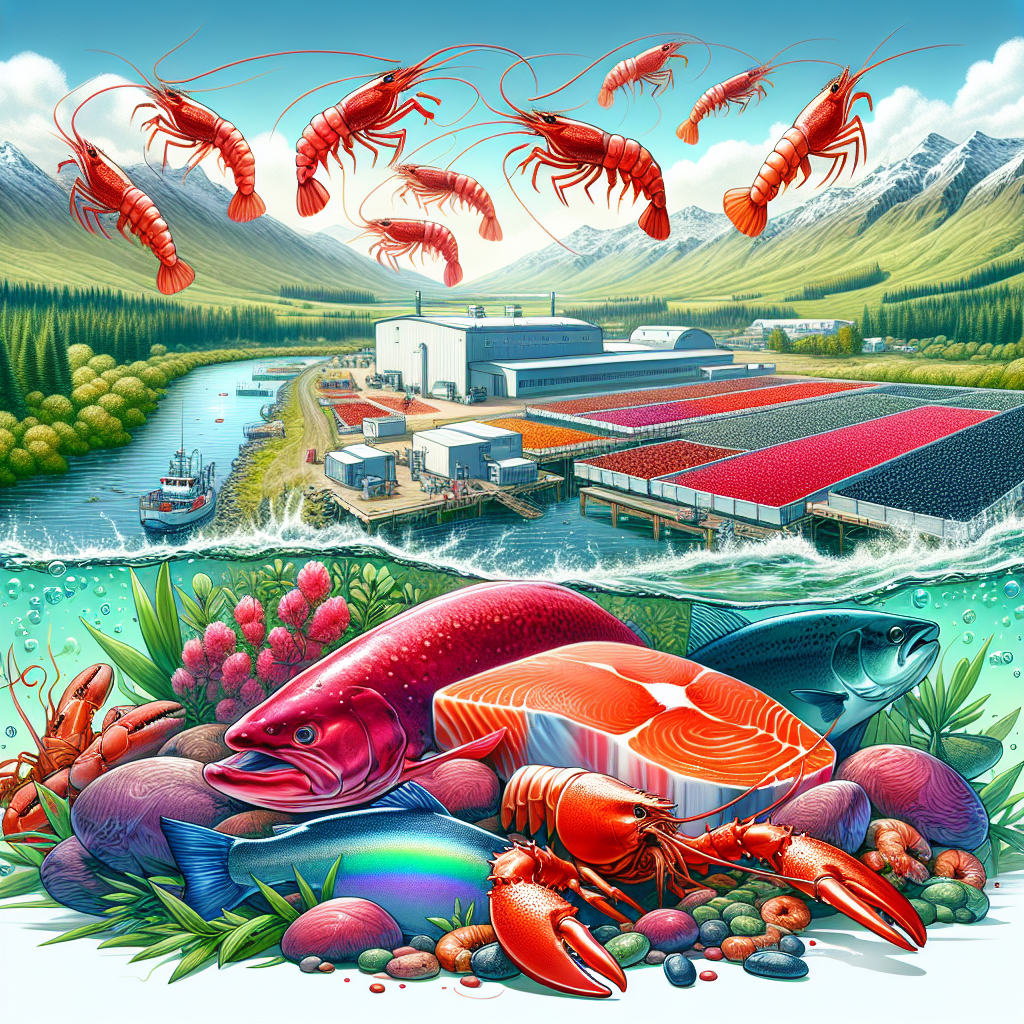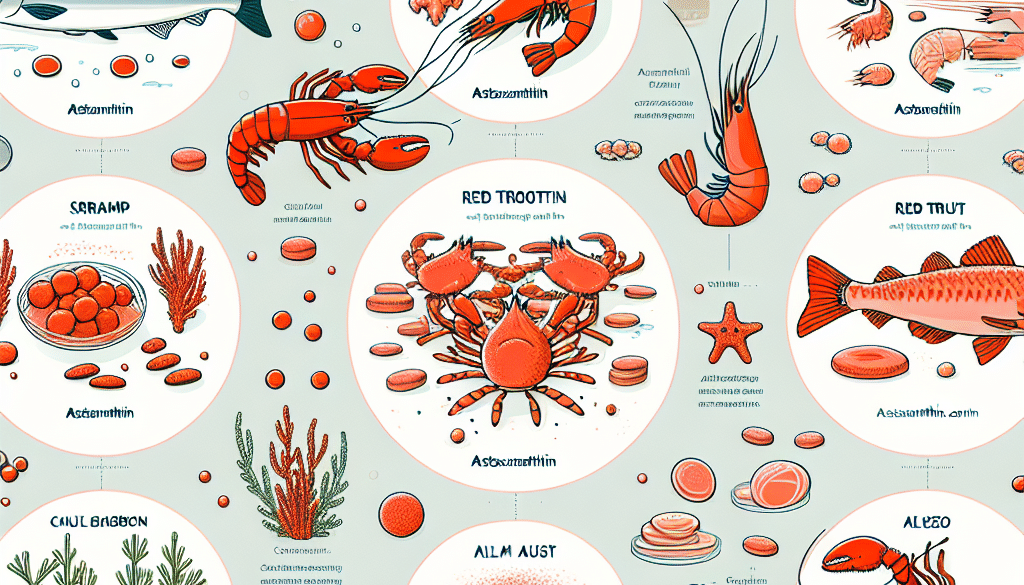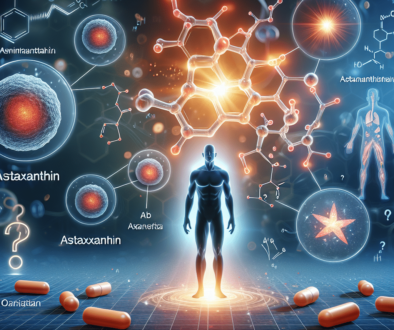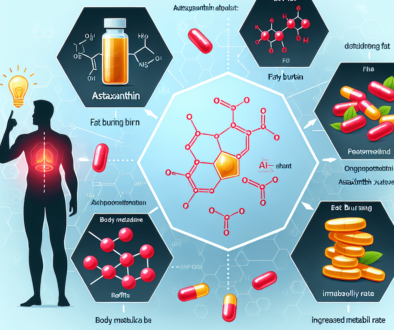What Is The Best Source Of Astaxanthin?
-
Table of Contents
- Discovering the Best Source of Astaxanthin: A Comprehensive Guide
- Understanding Astaxanthin and Its Benefits
- Natural vs. Synthetic Astaxanthin
- Top Natural Sources of Astaxanthin
- Microalgae: The Primary Producer
- Seafood: A Secondary Source
- Supplements: A Convenient Alternative
- Choosing the Right Astaxanthin Supplement
- Case Studies and Research
- Statistics on Astaxanthin Popularity
- Conclusion: The Superiority of Natural Astaxanthin Sources
- Enhance Your Health with ETprotein’s Protein Products
Discovering the Best Source of Astaxanthin: A Comprehensive Guide

Astaxanthin, a potent antioxidant, has garnered significant attention for its numerous health benefits. This naturally occurring carotenoid is known for its powerful anti-inflammatory and anti-aging properties. As consumers become more health-conscious, the demand for astaxanthin-rich products has surged. In this article, we will explore the best sources of astaxanthin, backed by research and scientific evidence.
Understanding Astaxanthin and Its Benefits
Astaxanthin is a keto-carotenoid that belongs to a larger class of chemical compounds known as terpenes. It is produced by microalgae and consumed by various marine animals, which contributes to their rich, vibrant coloration. The health benefits of astaxanthin are vast, including improved skin health, enhanced athletic performance, support for eye health, and potential protection against certain diseases.
- Skin Health: Astaxanthin has been shown to reduce signs of aging by protecting the skin from ultraviolet radiation and improving skin elasticity and moisture levels.
- Athletic Performance: Its anti-inflammatory properties may help reduce muscle damage and improve recovery times after exercise.
- Eye Health: Astaxanthin can cross the blood-retinal barrier, potentially offering protective effects against eye fatigue and age-related macular degeneration.
- Disease Prevention: The antioxidant properties of astaxanthin may help combat oxidative stress, which is linked to various chronic diseases.
Natural vs. Synthetic Astaxanthin
Before delving into the best sources of astaxanthin, it’s important to distinguish between natural and synthetic forms. Natural astaxanthin is derived from microalgae and other marine organisms, while synthetic astaxanthin is chemically produced. Studies suggest that natural astaxanthin is more potent and bioavailable than its synthetic counterpart, making it the preferred choice for supplementation.
Top Natural Sources of Astaxanthin
When it comes to natural sources of astaxanthin, there are several options to consider:
Microalgae: The Primary Producer
The microalgae Haematococcus pluvialis is the richest known natural source of astaxanthin. When this algae is stressed, it produces astaxanthin as a protective mechanism against harsh environmental conditions. As a result, Haematococcus pluvialis is commonly cultivated for commercial astaxanthin production.
Seafood: A Secondary Source
Marine animals that consume microalgae, such as Haematococcus pluvialis, accumulate astaxanthin in their tissues. Some of the best seafood sources include:
- Salmon, especially wild-caught sockeye salmon
- Trout
- Shrimp
- Krill
- Lobster
- Crab
While seafood can provide astaxanthin, the concentration is significantly lower compared to direct microalgae sources.
Supplements: A Convenient Alternative
For those who do not consume enough astaxanthin through diet alone, supplements offer a practical solution. Astaxanthin supplements typically come from the extract of Haematococcus pluvialis and are available in various forms, including soft gels, capsules, and liquids.
Choosing the Right Astaxanthin Supplement
When selecting an astaxanthin supplement, consider the following factors:
- Source: Opt for natural astaxanthin derived from microalgae rather than synthetic versions.
- Dosage: Supplements typically range from 4 to 12 mg per serving. Consult with a healthcare provider to determine the appropriate dosage for your needs.
- Certifications: Look for third-party certifications to ensure quality and purity.
- Additional Ingredients: Some supplements may contain additional antioxidants or oils to enhance absorption.
Case Studies and Research
Several studies have highlighted the efficacy of natural astaxanthin supplements. For instance, a randomized double-blind study published in the Journal of Cosmetic Dermatology found that astaxanthin significantly improved skin elasticity and hydration. Another study in the Journal of Sports Medicine and Physical Fitness reported that astaxanthin supplementation reduced muscle damage and inflammation in athletes.
Statistics on Astaxanthin Popularity
The global market for astaxanthin has been growing steadily. According to a report by Grand View Research, the global astaxanthin market size was valued at USD 1.00 billion in 2020 and is expected to expand at a compound annual growth rate (CAGR) of 16.3% from 2021 to 2028. This growth is attributed to the increasing awareness of astaxanthin’s health benefits and its application in various industries.
Conclusion: The Superiority of Natural Astaxanthin Sources
In conclusion, the best source of astaxanthin is natural, particularly from the microalgae Haematococcus pluvialis. While seafood provides astaxanthin, the concentration is much lower than that found in microalgae. For those seeking a more concentrated and convenient form, high-quality natural astaxanthin supplements are the optimal choice. By choosing the right source and form of astaxanthin, individuals can harness the full spectrum of its health benefits.
Enhance Your Health with ETprotein’s Protein Products
In addition to astaxanthin, incorporating high-quality protein into your diet is essential for overall health. ETprotein offers a range of organic bulk vegan proteins that can complement your astaxanthin intake. Their products, including organic rice protein, pea protein, and various seed proteins, are non-GMO, allergen-free, and characterized by a neutral taste. Whether you’re looking to support muscle growth, weight management, or general wellness, ETprotein’s offerings provide a solid foundation for a nutritious diet.
About ETprotein:
ETprotein, a reputable protein and L-(+)-Ergothioneine (EGT) Chinese factory manufacturer and supplier, is renowned for producing, stocking, exporting, and delivering the highest quality organic bulk vegan proteins and L-(+)-Ergothioneine. They include Organic rice protein, clear rice protein, pea protein, clear pea protein, watermelon seed protein, pumpkin seed protein, sunflower seed protein, mung bean protein, peanut protein, and L-(+)-Ergothioneine EGT Pharmaceutical grade, L-(+)-Ergothioneine EGT food grade, L-(+)-Ergothioneine EGT cosmetic grade, L-(+)-Ergothioneine EGT reference grade and L-(+)-Ergothioneine EGT standard. Their offerings, characterized by a neutral taste, non-GMO, allergen-free attributes, with L-(+)-Ergothioneine purity over 98%, 99%, cater to a diverse range of industries. They serve nutraceutical, pharmaceutical, cosmeceutical, veterinary, as well as food and beverage finished product distributors, traders, and manufacturers across Europe, USA, Canada, Australia, Thailand, Japan, Korea, Brazil, and Chile, among others.
ETprotein specialization includes exporting and delivering tailor-made protein powder and finished nutritional supplements. Their extensive product range covers sectors like Food and Beverage, Sports Nutrition, Weight Management, Dietary Supplements, Health and Wellness Products, and Infant Formula, ensuring comprehensive solutions to meet all your protein needs.
As a trusted company by leading global food and beverage brands and Fortune 500 companies, ETprotein reinforces China’s reputation in the global arena. For more information or to sample their products, please contact them and email sales(at)ETprotein.com today.











